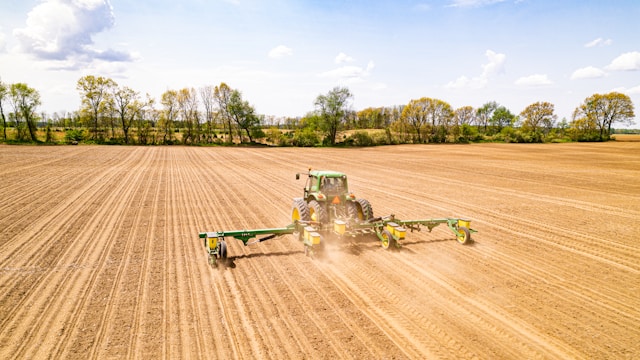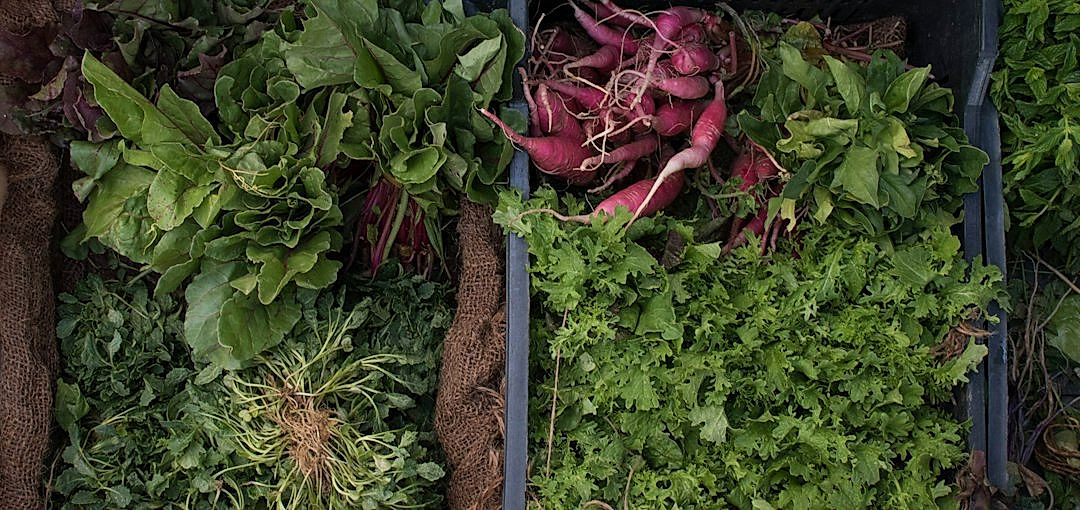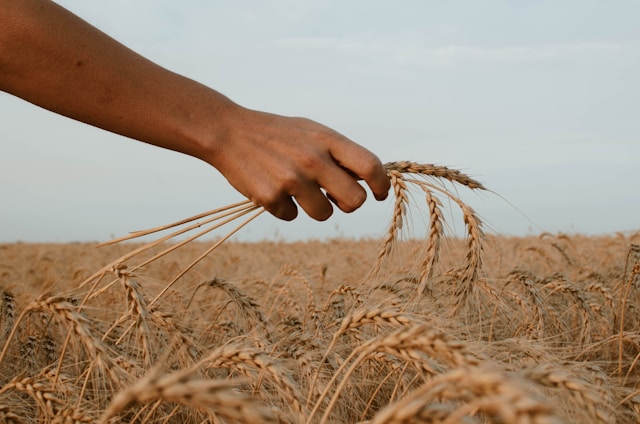Sustainability has steadily become an important player in the field of agriculture over recent decades.
As we’ve come to understand the detrimental effects of certain farming practices on the environment, there’s been a great effort to create alternatives.
Produce growers, in particular, are shifting their focus towards sustainable soil management.
This process involves a combination of practices aimed at improving soil health, productivity, and resilient ecosystems.
This approach not only ensures the longevity of their farms but also assists in mitigating the impacts of climate change.
Additionally, farmers can significantly cut down on costs associated with artificial fertilisers and pesticides.
Contents
- Sustainable Soil Management Tips For Produce Growers
- 1. Practice crop rotation to prevent soil degradation.
- 2. Compost Organic Waste for Enhanced Soil Fertility
- 3. Reduce tillage to decrease soil erosion.
- 4. Use cover crops to boost soil health.
- 5. Limit Chemical Fertilizers, Opt for Organic Ones
- 6. Implement terracing on slopes to reduce runoff.
- 7. Encourage biodiversity to maintain soil balance
- The Bottom Line
Sustainable Soil Management Tips For Produce Growers
1. Practice crop rotation to prevent soil degradation.
As produce growers, one of the most vital practices for sustainable soil management is crop rotation.
This refers to the systematic planting of different types of crops in the same area across multiple growing seasons.
Crop rotation is beneficial in combating soil degradation, a problem that often arises from monoculture or the continuous cultivation of the same crop in the same place.
Crop rotation essentially rejuvenates the soil, replenishing nutrients and maintaining its overall health for long-term agricultural productivity.
Soils continuously exposed to the same crop often experience a reduction in fertility, resulting in lower produce yields.
This happens because different plants have different nutrient needs and, therefore, absorb varying amounts and types of nutrients from the soil.
By alternating crops over time, you ensure that the soil isn’t consistently depleted of the same nutrients.
Additionally, some crops, like legumes, can actually help enrich the soil with certain nutrients. For example, legumes often ‘fix’ nitrogen from the atmosphere into the soil, boosting overall soil fertility.
Crop rotation also reduces the likelihood of soil erosion, a challenge that plagues many produce farmers around the world.
Soil erosion happens when soil particles are carried away by wind or water, leading to thin, depleted soil layers that are unfavorable for crop growth.
Planting a variety of crops with differing root systems helps ensure a constant vegetative ground cover that minimizes surface runoff, thus reducing soil erosion.
Another advantage of crop rotation is its effect on pest and disease management.
By altering the crops grown in a particular area, you effectively disrupt the life cycles of pests and diseases that thrive on specific crops.
This leads to a reduction in crop loss due to pests and diseases, directly boosting your yield and profit margins.
As you can see, crop rotation is an invaluable technique in sustainable soil management.
By practicing it, you not only prevent soil degradation but also enhance overall soil health, ensure better pest and disease control, and achieve greater agricultural productivity in an environmentally friendly manner.
2. Compost Organic Waste for Enhanced Soil Fertility
One fundamental practice in sustainable soil management is the composting of organic waste.
This involves the transformation of waste materials such as leaves, vegetable peels, garden trimmings and other organic matter into a rich, earthy substance known as compost.
Compost serves as an organic fertilizer, enhancing soil fertility and promoting healthy plant growth.
Not only does composting help to improve soil health, it also plays a huge role in waste reduction.
Many types of organic waste that are often discarded can be composted, reducing the amount of waste that goes to landfills.
Composted matter is nutrient-rich, providing an excellent source of essential nutrients for plants.
This can lead to increased yields and more nutritious produce, a fact that can benefit both individual growers and commercial farming operations alike.
Furthermore, composting organic waste can help to improve soil water retention.
Compost acts as a sponge, soaking up water and slowly releasing it to plants, preventing rapid evaporation and reducing water waste.
This can be particularly beneficial in regions where water is scarce or drought conditions exist.
In addition to improving soil fertility and moisture retention, compost is beneficial for its ability to improve soil structure and boost beneficial microbial activity.
Adding compost to soil can improve its texture and structure, making it easier to work with and allowing for better root penetration.
Moreover, compost fosters a healthy population of beneficial soil microbes, which in turn contribute to nutrient cycling and disease suppression.
Through their interaction with compost, these microbes help to break down organic matter into nutrients that can be easily taken up by plant roots.
This also contributes to soil health by preventing disease and pest outbreaks, maintaining a balanced soil ecosystem.
Thus, sustainable soil management greatly benefits from composting organic waste, which not only boosts soil fertility, but also plays an integral part in waste management, water conservation, improving soil structure, and promoting soil microbial activity.
By incorporating composting into their cultivation practices, produce growers can not only enhance their soil fertility but also contribute to broader sustainability goals.
3. Reduce tillage to decrease soil erosion.
Reducing tillage is a sustainable soil management strategy that can significantly decrease soil erosion.
This process involves reducing the disturbance of soil by farming practices such as ploughing or harrowing.
By reducing tillage, produce growers can maintain a good soil structure, which is crucial in preventing soil erosion.
Not disturbing the soil also helps maintain its natural composition, preserving valuable nutrients and decreasing the chances of soil degradation.
Consequently, practices like no-till farming and minimum tillage farming have been gaining popularity among many farmers for their benefits to the soil.
No-till farming entails planting crops directly into the residue of the previous crop without turning the soil.
This practice preserves soil structure, retains moisture, and prevents erosion, contributing greatly to sustainable soil management.
On the other hand, minimum tillage involves minimal soil disturbance while still providing some of the benefits of no-till farming.
It can be especially beneficial in situations where no-till farming may be unsuitable, such as in the case of heavy clay soils that do not drain well.
Moreover, another advantageous aspect of reduced tillage is the potential for reduced labour and equipment costs.
Less intensive tillage requires less fuel and can therefore decrease expenses and environmental impact.
On top of the environmental benefits, reduced tillage can enhance soil fertility by creating a favourable environment for helpful microorganisms.
These microorganisms break down organic matter, releasing nutrients into the soil that can be absorbed by plants, thus contributing to higher yield and healthier crops.
Moreover, adopting reduced tillage methods can also help in sequestering carbon in the soil, thereby helping in combating climate change.
This practice can be a part of an effective sustainable soil management plan that benefits not only the health of the soil but also the productivity of the farm.
Therefore, it is clear that reducing tillage is a practical and beneficial method for both decreasing soil erosion and ensuring sustainable soil management.
4. Use cover crops to boost soil health.
Implementing the practice of using cover crops is a crucial strategy for produce growers aiming to manage soil sustainably.
These crops, planted primarily for the purpose of improving soil health, play various key roles in enhancing its fertility and structure.
As of late, the use of cover crops has gained popularity as a natural and sustainable soil management practice.
Particularly notable is their efficaciousness in protecting soil against erosion, reducing the runoff of fertilizers and pesticides into other ecosystems, and improving the soil’s water-holding capacity.
The root networks of cover crops can penetrate deeply into the soil, which creates channels that facilitate the infiltration of water.
This reduces surface runoff and allows the soil layers to retain a greater portion of the useful water.
Cover crops are also excellent sources of organic matter, which is instrumental in enhancing soil fertility.
When you allow cover crops to die off and decompose in the field, they turn into a rich source of organic material that feeds the soil’s microbial life.
This process also ensures that essential nutrients are recycled back into the soil, promoting a wheel of life concept.
The decomposition of cover crops could also improve the soil structure in the long run by increasing its capacity to hold and exchange nutrients.
The use of cover crops could also help reduce the need for synthetic fertilizers, further promoting organic farming principles.
A number of cover crops have the ability to fix atmospheric nitrogen, a crucial plant nutrient, in the soil which lessens the necessity for nitrogen-based fertilizers.
Examples of nitrogen-fixing cover crops include clover, vetch, and beans.
So, in adopting the use of cover crops, growers can support the sustainable management of their soils, thus contributing to the bigger picture of environmentally-friendly farming practices.
Hands down, the role of cover crops in sustainable soil management cannot be overlooked. They truly serve many purposes, all in favor of creating a more productive and sustainable agricultural system.
5. Limit Chemical Fertilizers, Opt for Organic Ones
One of the most critical steps in sustainable soil management is limiting the use of chemical fertilizers.
Overuse of these substances can lead to soil degradation and loss of beneficial organisms.
Instead, farmers should opt for organic fertilizers that enhance the soil’s health and productivity.
Organic fertilizers, such as compost, manure, or bone meal, replenish the soil with essential nutrients and microorganisms.
Unlike chemical fertilizers, organic ones improve the soil structure and increase its capacity to hold water and nutrients.
This makes the soil more resilient and less susceptible to erosion and nutrient leaching.
Additionally, organic fertilizers release nutrients slowly and steadily, allowing plants to absorb them more efficiently.
Taking such a step is particularly beneficial for produce growers, as healthier soil often results in higher crop yields.
Moreover, organic fertilizers are environmentally friendly, minimizing the risk of water contamination due to fertilizer runoff.
Many farmers worry about the cost and availability of organic fertilizers.
However, these materials can often be locally sourced or even produced on the farm itself through methods like composting and worm farming.
This approach not only ensures a more sustainable soil management but also helps to reduce waste and save money.
While it is not always possible to completely eliminate the use of chemical fertilizers, they should be used judiciously and as a last resort.
It is recommended to always prefer organic fertilizers to support the long-term health and fertility of the soil.
Therefore, choosing organic over chemical fertilizers is a cornerstone of sustainable soil management for produce growers.
Remember, for a productive garden or farm, it’s not just about what grows above the ground, but also what happens beneath it.
6. Implement terracing on slopes to reduce runoff.
In the fight for sustainable soil management in produce farming, the technique of terracing is a highly effective approach towards managing runoff, particularly in hilly or sloped farming areas.
The primary objective of this technique is to slow down the speed ‘ at which water moves downhill, thus avoiding loss of topsoil, which is vital for the growth of plants.
Runoff can carry away nutrients that are crucial for plant growth, leading to decreased productivity and yield in the long run.
Terracing involves creating flat platforms in sloped or hilly terrain, which have the effect of slowing down the speed of water, thus preventing the rapid flow of water which contributes to soil erosion.
It is crucial to understand that terracing, though beneficial, is not a one-size-fits-all solution and has to be effectively tailored to match the specific requirements of the terrain and the type of crops grown.
In order to create terraces, the hill or slope is cut into a series of receding flat surfaces, resembling a set of steps—hence, the term ‘terracing’. You could almost think of it as ‘stepping down’ your hillside or slope to create these flat surfaces.
The flat areas are purposed for cultivating crops while the steeper parts between terraces are used for directing and controlling the flow of water, thus minimizing the risk of erosion and runoff.
Maintaining the terraces can be labor-intensive, but in the long term, it can be a vital strategy for soil conservation and maximizing productivity from your farmland.
The implementation and success of terracing can depend on factors such as the content of the soil, climate, the degree and intensity of slope, and also the type of vegetation present.
While the technique can be labor and cost-intensive initially, the benefits of terracing on overall soil health management, its positive impact on soil fertility, and ultimately on crop productivity, in the long-term, can make it a worthy investment.
In certain regions, further improvements can be achieved by incorporating other practices like mulching or cover cropping on the terraces to further improve soil fertility and health.
In essence, terracing is a farming technique that allows growers to farm on slopes while preserving precious topsoil and maintaining a fertile ground for plant growth and nourishment.
Moreover, the terraces, by reducing the speed of water, not only conserve soil but also help in capturing and retaining moisture in the soil, which can be beneficial during dry periods.
By mitigating runoff and soil erosion, terracing can play a key role in sustainable produce farming, and contribute towards responsible agriculture practices.
7. Encourage biodiversity to maintain soil balance
One critical aspect of sustainable soil management is encouraging biodiversity within your land.
Having a variety of plants, animals, and microorganisms contributes to a healthy soil ecosystem.
Each species, whether it’s a type of insect, bird, or bacteria, plays an essential role in the nutrient cycle and biological processes that maintain soil fertility.
What’s often not recognized is that each organism is an integral part of the soil’s biological makeup.
This is especially crucial as the greater the biodiversity, the more resistant your soil will be to pests, diseases, and environmental changes.
Biodiversity also contributes to soil structure, facilitating proper air circulation and water movement, necessary for plant root systems.
Crop rotation and plantation of cover crops, previously discussed methods, also increase soil biodiversity.
Another way to promote biodiversity is to Kmake certain portions of your land wild or semi-wild, allowing natural ecosystems to flourish.
You can also consider creating habitats for beneficial insects that aid in pest management and enhance pollination.
Leaving some spots for weeds to grow is also good practice, as many weeds serve as food for certain insects and can increase the overall distribution of nutrients in the soil.
However, it’s essential to control the growth of invasive species, which can out-compete native flora, thus negatively affecting the ecosystem’s balance.
Integrating livestock into your fields also encourages biodiversity in soil.
The manure they leave behind is a valuable organic soil conditioner, filled with a rich mix of bacteria, fungi, and other microorganisms.
Livestock grazing can also keep weed growth under control and promote vegetation diversity.
By implementing these practices, you would be contributing significantly, not only to your farm’s productivity but most importantly, to the health and sustainability of the world’s soils.
The Bottom Line
It’s evident that maintaining the health of our soil is imperative not just for our crops, but also for the overall health of our planet.
Simple yet effective strategies like practicing crop rotation, composting organic waste, and reducing tillage can help us prevent soil degradation while enhancing fertility and reducing erosion.
Enhancing soil health through the use of cover crops and organic fertilizers can also play a crucial role.
Additionally, methods like the implementation of terracing and the encouragement of biodiversity can prove vital in maintaining soil balance.
Thus, it’s crucial we embrace these practices and understand their importance in sustaining the fertile ground beneath our feet.




